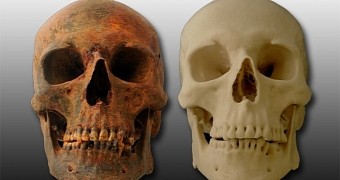Forensics is a science that has come a long way since the establishment of the first police department, but there's always room for improvement, especially if one of the techniques you use is older than civilization.
Sure, clay modeling may sound sophisticated enough from an artist's standpoint, but that doesn't change the fact that playing with wet soil is something that people have been doing since the age of the cavemen.
Although it's true that it takes a certain amount of skill to reproduce the likeness of someone, or the skull underneath the likeness. Nevertheless, it shouldn't prevent progress.
Which is why the Hillsborough County (Florida) Coroner’s Office has decided to change one of its long-lasting practices, and get rid of a lot of frustration in the process.
No more clay-based forensic facial reconstruction
When human remains are found, they are used to attempt to identify the person and determine whether or not their demise was the result of a crime. There are also investigations that can involve ancient humans and hominids.
Sometimes, only the skulls are found, or parts of them, in which case an artist has to take over and try to recreate the face of the person based only on the shape of the bones.
Unfortunately, while that's going on, the original skull must be used, which can result in damage even if people are especially careful. Even after photos are taken and the clay layers are removed, there can be unfortunate repercussions.
With 3D scanning and printing becoming so popular and easy to use, Tampa, Florida-based Engineering and Manufacturing Services, Inc. (EMS) is offering to do the forensic facial reconstruction while leaving the skull well alone.
How the process works
A Z Scanner Z800 from Z Corp is used to scan the skull. After the 3D model has been built, SensAble Technologies (part of Geomagic) can use the “Clay Tools” to allow technicians to reconstruct the flesh and skin, virtually. The real-life buildup of clay is simulated with the help of virtual tissue depth markers.
Once the final 3D model is ready, a full color 3D print is produced on a Z Corp Z650 3D printer, in full life size. The model can be kept as evidence alongside the original skull.
It won't make forensic facial reconstruction admissible as evidence in court, since it is so dependent on artist inspiration, but it will help the procedure regardless. Also, it will allow multiple artists to more easily perform the task without ruining the original skull (having several opinions is always needed for this).

 14 DAY TRIAL //
14 DAY TRIAL //